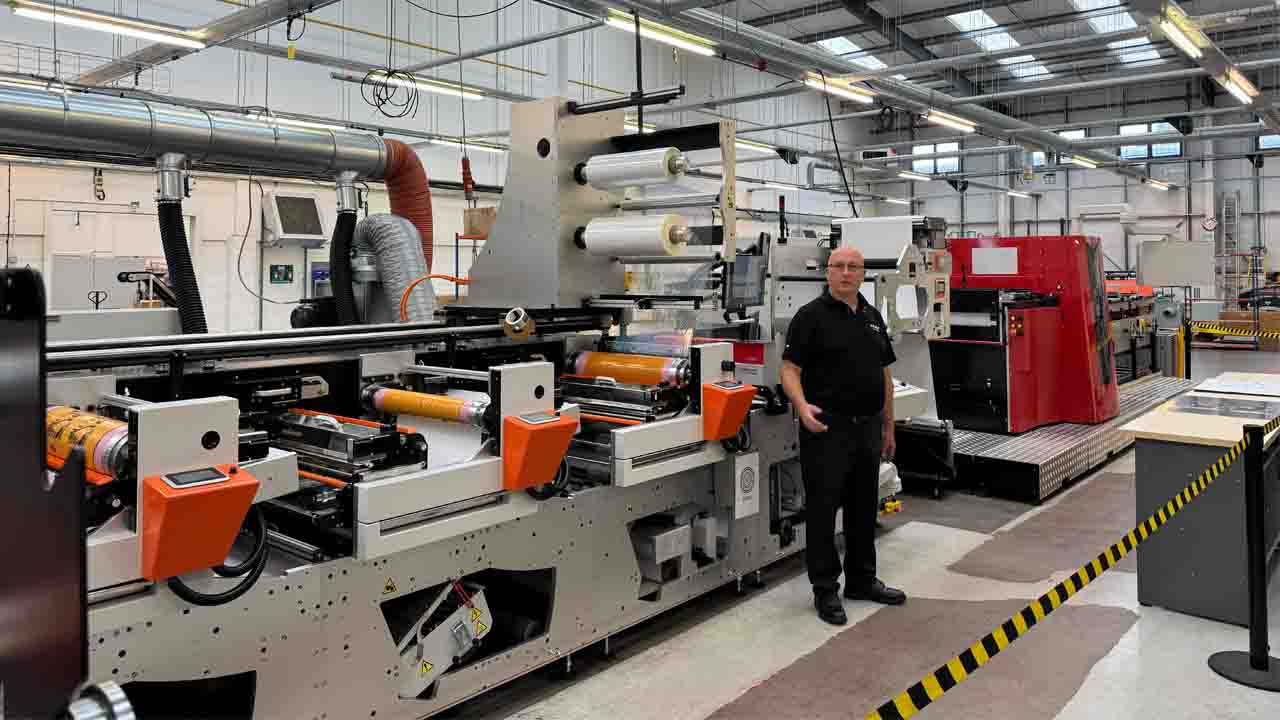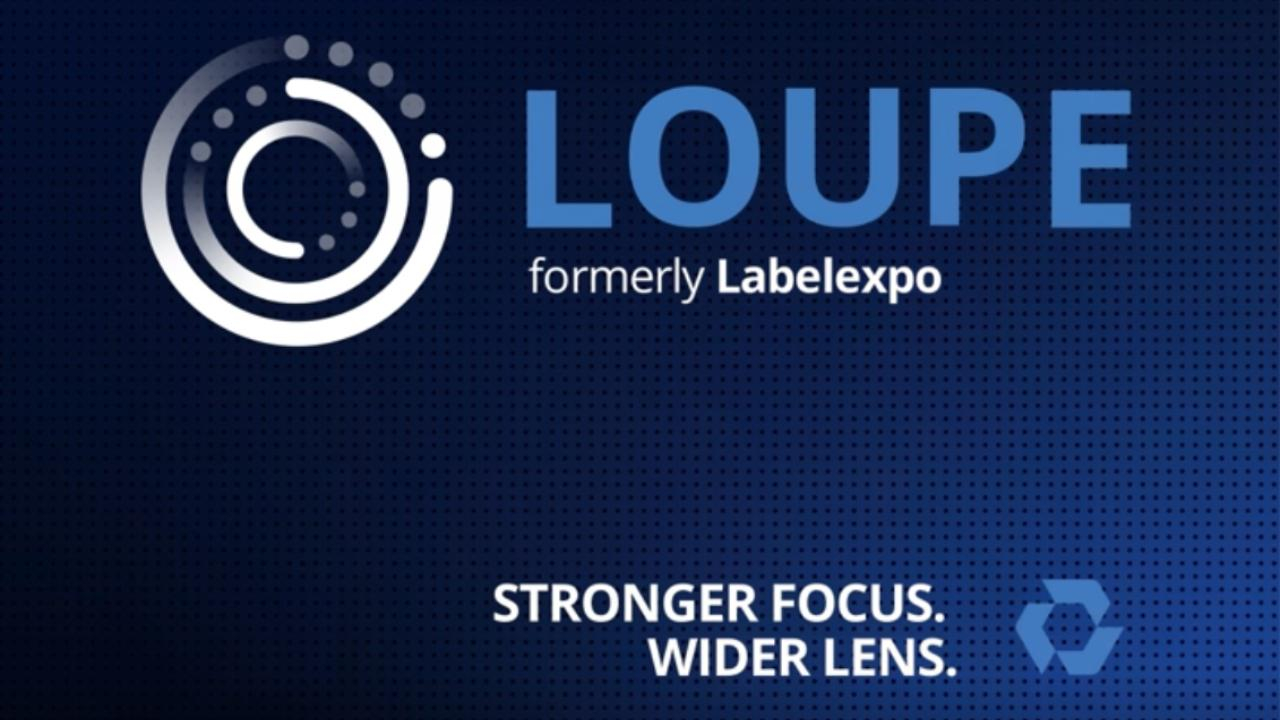Edale demonstrates in-line carton workflow
With in-line folding cartons now taking center stage at Labelexpo Europe 2025, Edale has previewed the press it plans to bring to the show.

Edale FL5 carton press with in-line fl atbed die cut/crease unit
Canon-owned Edale recently held an open house called ‘Rethinking Carton Production’ at its UK production facility. The event provided an opportunity not only to see the press the company plans to bring to Labelexpo Europe 2025, but also to discuss the wider future of in-line flexo production.
The 600mm (24in)-wide 8-color FL5 single-pass carton press demonstrated during the open house was configured with jumbo unwind, turnbar for reverse printing, Edale’s EZFoil cold foil unit, a final cast and cure module to add a holographic finish, an in-line FDC-600 flatbed cut and crease module and a shingling conveyor.
The FL5 press is configured with both UV and IR lamps, the latter for water-based inks and coatings. The press runs up to 180m/min on substrates up to 700 microns (24pt). Web inspection is provided by a BST TubeScan 4000.
The FDC-600 module runs at 13,000 impressions per hour and applies 120 tons of cut pressure. In addition to cut and crease, the FDC-600 can also provide embossing and braille.
For fast job changeover, it incorporates a quick-release chase and pre-register, which automatically positions the print cylinder based on job recall data. Delivery is via a de-nesting system that allows easy collation of finished blanks. Waste is collected on a separate conveyor and chopped, ready for disposal.
For short, medium and long runs, one of the greatest strengths of the in-line solution is small format, embellished, high-quality cartons
Whether converters choose the in-line flatbed configuration or rotary cut/crease tooling depends largely on the profile of jobs.
Explains Gary Roberts, head of sales EMEA at Edale: ‘A simple profile cut is more suited to rotary. Flatbed is better for short runs, with a changeover time of just 20 minutes per die, and makeready is faster and with less waste than rotary. Also, flatbed tooling is much cheaper, and these tools can be made in-house. But flatbed is limited by speed to around 80m/min compared to 130m/min for full rotary, so it all depends on the kind of job.’
Cost calculator
Edale demonstrated its Carton Cost Calculator tool, which compares in-line flexo with multi-stage litho folding carton production. The calculator takes into account a range of factors, including capital costs and depreciation, power, uptime, labor, operating speeds, run length, carton size and stepping, makeready, waste, plates and tapes, die tools and consumables. One insight, according to Roberts, is that it costs 5 to 10 percent less to buy carton stock on the roll than to buy sheets. The calculator assumes printing and converting a 286 x 257mm (10 x 11in) carton.
Calculations are based only on machine operating times, so they do not include work-in-progress time, which would tend to skew the results further toward in-line production.
Using the calculator, the first example job looked at simple 4-color surface printing. This shows in-line flexo with a significant production cost advantage at run lengths from 5,000 up to 75,000 cartons, with the economic transition point at 76,900.
Most striking is the production time savings for in-line flexo: 222 minutes compared to 407 minutes for the litho job. Negatives for in-line include higher overall waste, mainly accounted for by higher makeready waste, and lower annual print capacity.
The second example looked at a 4-color surface and reverse print. This showed an even greater advantage for in-line flexo on shorter runs, and a 6.91 percent cost advantage even at runs of over 1 million cartons. Production time savings are even greater, at over 58 percent of the overall litho job time. The annual print capacity is over 17 percent higher than for the litho operation.
‘When reverse print is included, there is no economic crossover because it would need another press run on sheet-fed,’ says Ryan Barrett, head of sales at Edale-Canon.
The third example was surface print, reverse print and foiling. This showed a wider production cost advantage for in-line, even at run lengths of over 1 million cartons. Total production time is one-third that of the litho operation.
Summarizing the results, Barrett says: ‘For short, medium and long runs, one of the greatest strengths of the in-line solution is small format, embellished, high quality cartons.’
All change at the top
Canon acquired Edale just over three years ago as part of an ambitious program to establish itself as a major player across multiple labels and package printing segments. It was clear from this event that Edale is central to that strategy. After 20 years as managing director of Edale, James Boughton has moved to Canon Production Printing (CPP), Edale’s parent company, to take on the role of director of regional sales and operations development - labels and packaging. His key role will be integrating the Edale brand and equipment into Canon’s global sales and support operations across the Americas, EMEA and APAC.
Into Boughton’s shoes as managing director steps Lachlan
Buirds, who joined Edale as general manager.
Stay up to date
Subscribe to the free Label News newsletter and receive the latest content every week. We'll never share your email address.


